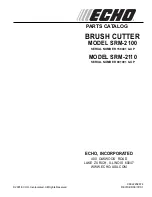
8
Dust explosion hazards
Dust from laser cutting presents dust explosion hazards as well as fire hazards. Dust explosions
occur the instant three conditions, oxygen, dust above the lower explosion concentration and
minimum ignition energy, are all met. If dust is accumulated, the first dust explosion scatters the
accumulated dust and may develop into a secondary explosion of greater scale.
- Clean scrap boxes, pre-boxes, and dust collector dust boxes every day.
- Dust from the laser cutting of magnesium and magnesium alloys has the highest risk of dust
explosion. Do not laser cut magnesium and magnesium alloys.
Thermite reaction hazards
When a mixture of dust with aluminum and iron oxide or other oxide ignites from some cause,
the aluminum generates high heat and explodes. This is called the thermite reaction and is a
very dangerous chemical reaction.
- Dust from the laser cutting of titanium, aluminum, zinc and their alloys causes the dangerous
thermite reaction when mixed with dust of oxidized iron or copper. Use dedicated machines for
laser cutting specific materials, completely remove the dust before and after laser cutting other
materials, and control so that dusts from laser cutting of different materials do not mix together.
When these metal dusts react with water, they generate high heat and hydrogen gas and also
present the risk of explosion. Never use water on metal fires. Be sure to install fire extinguishers
for metal fires.
Hazards of machine’s moving parts to human body
Enclosures, fences, light curtains and other safeguarding devices are required to prevent the
moving parts of the laser cutting machine from impacting or crushing the operator’s body parts
while the laser cutting machine is operating. When worksheets overhang the table during
repositioning, for example, it is necessary to install an auxiliary table. Optional safeguarding
devices are available. Contact AMADA.
Summary of Contents for Ensis 3015 AI
Page 10: ...9 ...





























